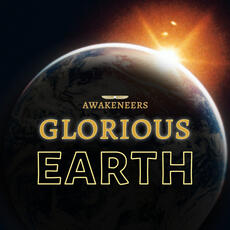Chart of Forests of British Columbia

The area of British Columbia is about 95 million hectares. About 55% to 60% of the area is forest. (This precentage varies, depending on what is included; for example, federal land, Indian reserve, private land or water bodies.) Also counted as forest are areas that have been logged, burned, or damaged by insects, but are expected to regenerate. [1, 2]
Because the province has a diverse range of ecological and climate zones, the following categories, used for timber inventory purposes, are very broad and limited.
OLD FOREST (Forest with mostly old trees)
The provincial government’s official definition of old forest is based on the age of the dominant species in the stand (grouping of trees with similar characteristics). In general, this means 250 years or older on the coast, and 140 years or older in the interior.
In a 1992 management report, the province used a more ecologically focused definition: “Old growth forests are natural stands of old and young trees and their associated plants, animals, and ecological relationships which have remained essentially undisturbed by human activities”. [2, 6]
..."essentially undisturbed" can be taken to mean that there may be some evidence of human disturbance (such as historic Indigenous use or low-impact recreation trails, or removal of a few individual trees), but the ecosystem is functioning as if it had no human disturbance. These are widely used and accepted definitions in conservation and landscape ecology, but they are more challenging to measure and track, and cannot be directly correlated to the what is included in the 13.2 [million ha of old forest], even though there is likely a lot of overlap. [1]
MATURE FOREST (Forest with mostly mature trees)
These are stands that are considered biologically mature, but still too young to be counted as "old" according to the provincial criteria. For example, a Lodgepole Pine may be mature at 80 years but not considered old growth until it reaches the age of 140 years. [1, 2]
YOUNG FOREST (Forest with mostly young trees)
These are stands that are comprised mainly of trees lower than the age of maturity, including seedlings.
NON FOREST
These are ecosystems such as high alpine, water, non-treed grassland, rock, ice, desert – areas where trees generally do not or cannot grow. Included are previously forested areas that have been converted for urban development, infrastructure (roads, power lines, reservoirs, mines, valleys under dammed rivers), or agriculture. It is estimated that only 2 to 3% of BC’s original forests that existed 10,000 years ago have been converted, much of it in the past 200 years. However, some of these areas, such as the Fraser Valley, the largest estuary on the Pacific Coast, were of extreme ecological importance. [1, 4, 5]
PROTECTED FOREST
Of the 13.2 million ha of Old Forest, about 33% (4.4 million ha) is protected. "Protected" includes forest in parks, ecological reserves and wildlife management areas, ungulate winter range no-harvest areas, private conservation lands, regional water supply, OGMAs* (legal and non-legal Old Growth Management areas), and VQOs **(Visual Quality Objective). [1]
*OGMA: Areas that contain, or are managed to attain, specific structural old-growth attributes and that are delineated and mapped as fixed areas. [7] As stated in the BC data catalogue, “Forest licensees are not required to follow direction provided by non-legal OGMAs when preparing FSPs, and may choose to manage required old growth biodiversity targets in other ways.” [8]
**VQO: A program designed to manage the visual impacts on Crown forest land to ensure that the scenic quality expectations of the public and the tourism industry are met. [9]
TIMBER HARVEST LAND BASE (THLB)
Crown forest land that is considered both acceptable and economically feasible for harvesting. [7]
CURRENTLY INOPERABLE
Forest that is not currently considered economically feasible for harvesting.
Sources
2. A New Future for Old Forests: A Strategic Review of How British Columbia Manages for Old Forests Within its Ancient Ecosystems, April 2020; https://www2.gov.bc.ca/assets/gov/farming-natural-resources-and-industry/forestry/stewardship/old-growth-forests/strategic-review-20200430.pdf
3. BC's Old Growth Forest: Last Stand for Biodiversity
April 2020, Karen Price, Ph.D., Rachel F. Holt, Ph.D., R.P.Bio and Dave Daust R.P.F., M.Sc., Veridian Ecological Consulting; https://ecoreserves.bc.ca/wp-content/uploads/bcs-old-growth-forest-report-web.pdf
4. Rachel Holt, Ph.D; email to the Global Education Project, June 2021
5. “British Columbia’s Forests and Their Management”, Sept. 2003,
https://www.for.gov.bc.ca/hfd/pubs/Docs/Mr/Mr113/index.htm
6. “An Old Growth Strategy for British Columbia”, BC Ministry of Forests, May 1992
7. Glossary Of Terms By BC Forest Practices Board, https://www.bcfpb.ca/news-resources/glossary/
8. BC Data Catalogue, Old Growth Management Areas, https://catalogue.data.gov.bc.ca/dataset/old-growth-management-areas-non-legal-all
9. Visual Resource Management, https://www2.gov.bc.ca/gov/content/industry/forestry/managing-our-forest-resources/visual-resource-management
Tags: old forest, biomes, ecology, deforestation, primary forest, old growth forest, british columbia, forests of british columbia, global-ecology
Sign up for EARTH Dispatches
Enter you email below to get jaw dropping charts and maps delivered straight to your inbox.
Get the EARTH presentation
A 150 page high-resolution PDF containing all updated maps, charts and data on EARTH website; use as an information-packed educational slide show, printed booklet or a set of single-page handouts.
Learn More







